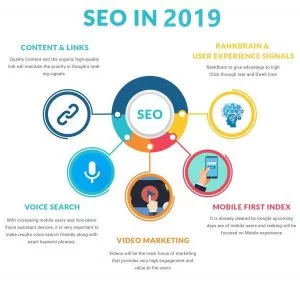Most website admins know all about the basics of SEO (Search Engine Optimization) nowadays. If you’re looking to do your own SEO on a shoestring, you’ve probably read lots of articles explaining how you need to pick up backlinks from other sides and create content with the appropriate keyword density. Every man and his dog knows how to do the fundamentals when it comes to on-page SEO, but when it comes to the technical side of SEO, we’re still in expert territory. Moving forward towards Five Great Ways to Optimize Your Technical SEO.
It doesn’t have to be this way. With a few basic technical tweaks, you can improve user experience on your website and gain competitive advantage.
Five Great Ways to Optimize Your Technical SEO:
1. Page speed tests
Page loading speeds are the bread and butter of technical SEO. When your page loading speeds drop, so do the people who want to shop. Getting started on this can be as easy as running a Google page speed test, generating some basic suggestions that will help your pages load faster: optimizing your images, eliminating extraneous code and working on on-site penalties for spam-designated content, broken links etc.
2. Improve server capacity
There are any number of providers out there who will claim they can offer you “the fastest servers in the world”. In practice, once you’re signed on, you only get a very small portion of the speed they’re advertising meaning your bandwidth is probably not what you thought it was. It’s worth investing in a quality hosting service like Onyx if you’re using an automated website builder since these tend to generate reams of extraneous code. The best hosting services will offer vastly improved loading speeds for cached and uncached content alike.
3. Caching
Caching stores certain elements of a page on the browser’s computer, limiting the amount of data it needs to transfer from the server when they move on to the next page. By reducing the load across the whole server and the individual page, you’re reducing page loading speeds on two fronts. If you’re on WordPress, you should consider downloading a Plugin to do this for you.
4. CSS and JavaScript aggregation
Each individual CSS and JavaScript file will necessitate a new server request in order to display on-page content. By aggregating certain CSS and JavaScript elements into a single file, you can reduce the number of server requests and streamline page loading. CSS is easier to aggregate than JavaScript. As a starting point, you need to focus on solely aggregating JavaScript in the header as elements towards the bottom of the page are more complicated.
5. HTML compression and minification
Many of the key formatting features of HTML (the textual elements like indentation, comments, and empty lines) make the file bigger. You can shave off the file size by paring back some of these features (albeit making them harder to read).
HTML also compresses very well, and this is where you can make some serious page loading speed improvements. You’ll need compression enabled to take advantage of this functionality, which compresses the page before sending it back to the visitor, whose browser will decompress the data to display your page. By doing this for HTML pages with repeating values, you could cut down the size of data requests by 90%.

